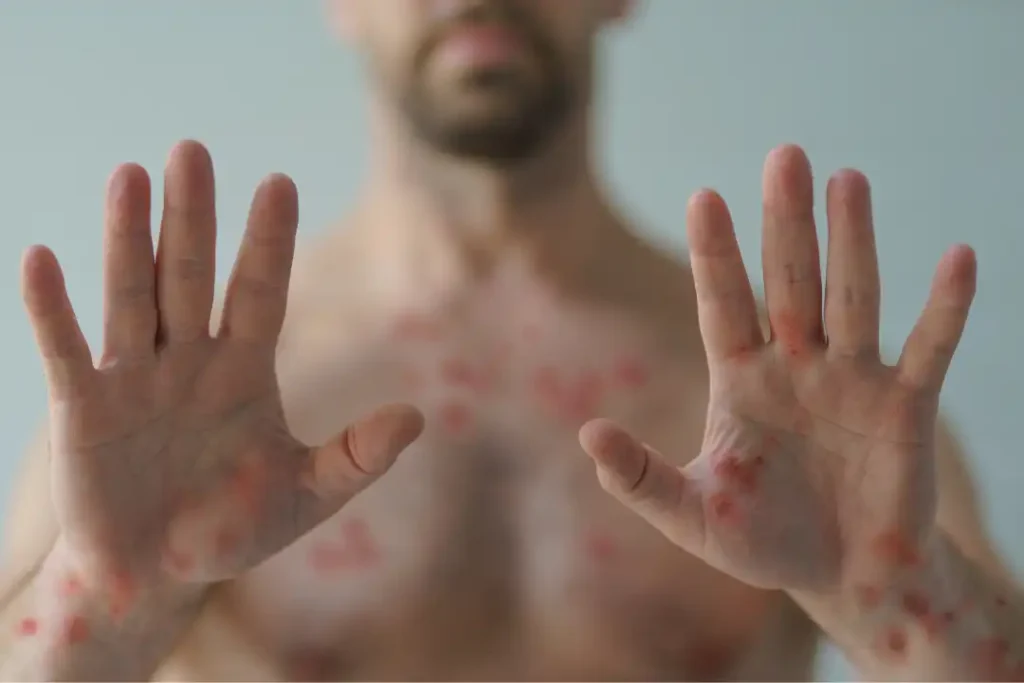
Table of Contents
Monkeypox is a viral illness that can cause various symptoms, including a distinct rash. This article aims to provide an overview of monkeypox and its stages, discussing the characteristics of the rash and its significance in diagnosing the disease. We will explore the three stages of the rash and delve into the variations in its appearance, addressing concerns and highlighting the importance of seeking medical attention if you suspect you have monkeypox.
Introduction
Monkeypox is a viral infection that belongs to the same family as smallpox. While it is a rare disease, it can cause considerable discomfort and distress. One of the hallmark signs of monkeypox is a rash that manifests in different stages. Understanding the progression of the rash is crucial for early detection and proper management.
Stage 1 Monkeypox Pictures: Flat, Red Bumps

The first stage of the monkeypox rash is characterized by the appearance of flat, red bumps on the skin. These bumps are usually small and round in shape, although larger and irregular bumps may also occur. They often emerge on the face before spreading to other parts of the body.
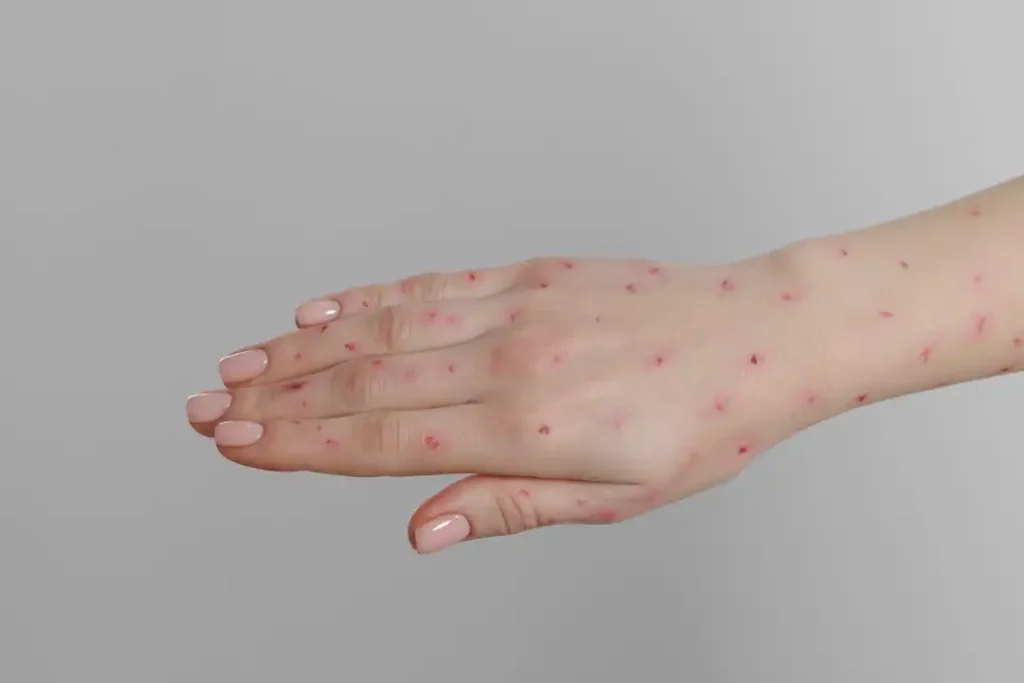
The presence of these bumps can be concerning, as they resemble various other skin conditions. This similarity can make it challenging to differentiate monkeypox from diseases like chickenpox or herpes. If you notice such a rash, it is important to consult a healthcare professional for an accurate diagnosis.
Stage 2 Monkeypox Pictures: Fluid-Filled Bumps (Vesicles)
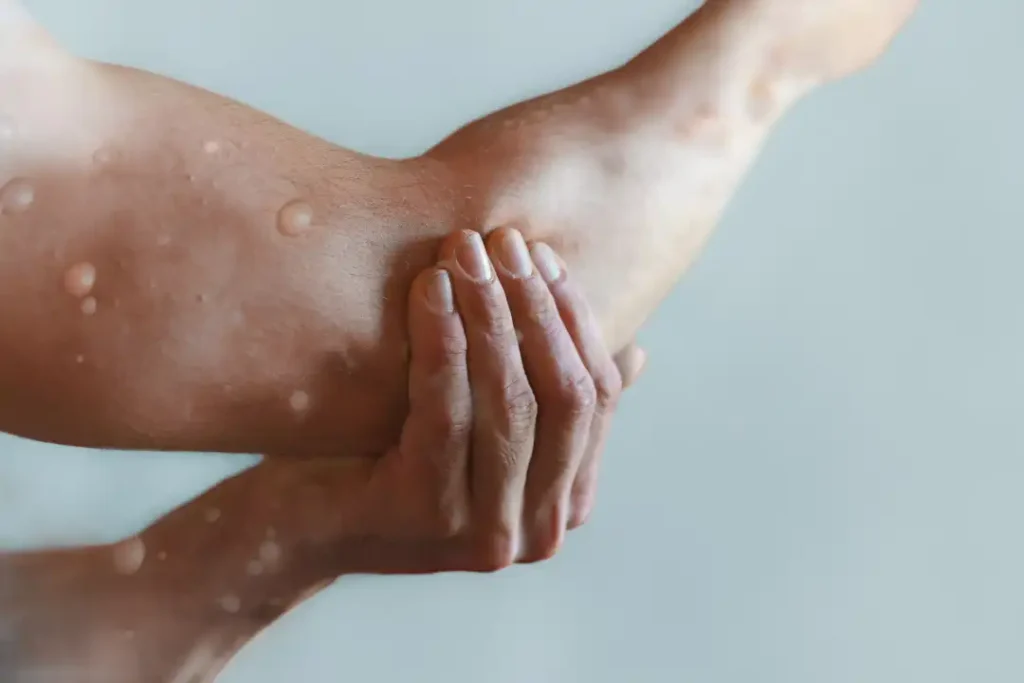
As monkeypox progresses, the bumps transition into the second stage, during which they become filled with fluid. These fluid-filled bumps are known as vesicles. The vesicles may vary in size and can be scattered across the body. They are a key characteristic of monkeypox and aid in its identification.
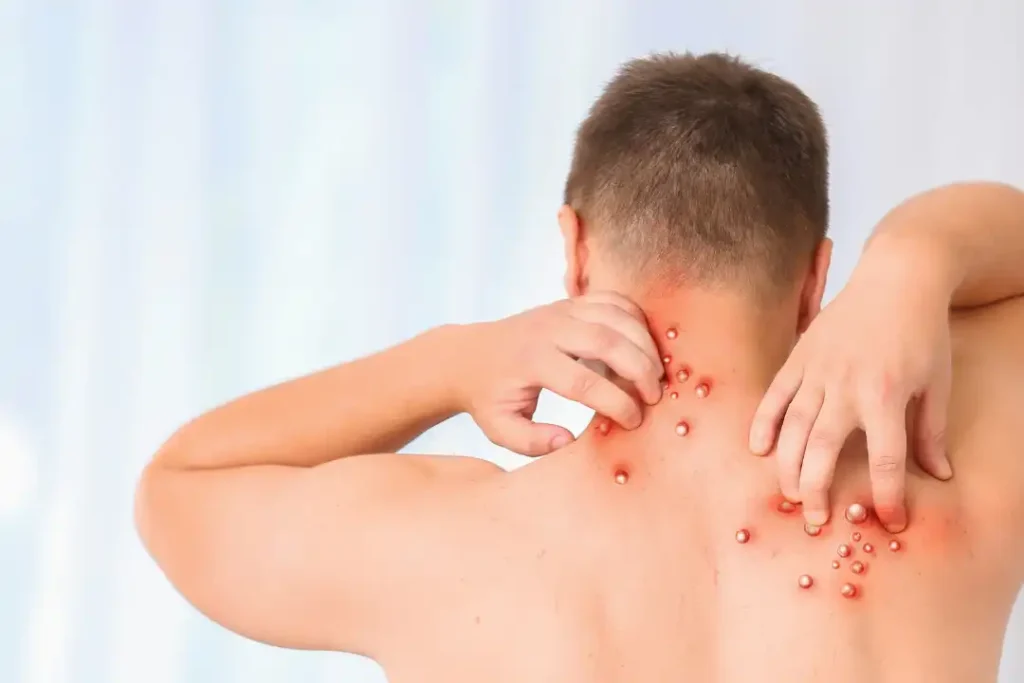
During this stage, individuals may experience discomfort, itching, and a general feeling of being unwell. It is essential to avoid scratching or popping the vesicles, as this can lead to further complications or infections. Seeking medical attention and following the recommended treatment plan is crucial for a smooth recovery.
Stage 3 Monkeypox Pictures: Scab Formation and Healing

In the third and final stage of the monkeypox rash, the vesicles break open and develop into scabs. These scabs gradually form a protective layer and eventually fall off, revealing new, healthy skin underneath. The healing process may take some time, but with proper care, the skin will return to its normal state.
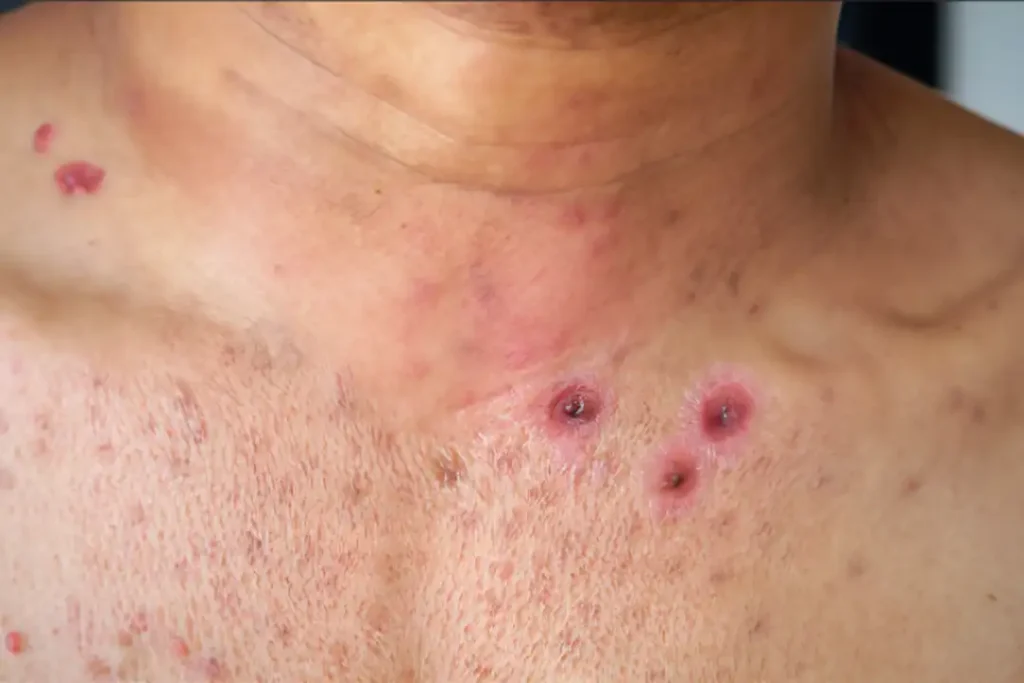
It is important to note that the duration of each stage can vary among individuals. Some people may progress through the stages more rapidly, while others may take longer to recover. Close monitoring by healthcare professionals is crucial to ensure appropriate care and management throughout the healing process.
Variations in Rash Appearance
The appearance of the monkeypox rash can vary not only across different stages but also among individuals. Some individuals may only develop a few bumps, while others may have a widespread rash with hundreds of bumps. The color of the bumps can also differ, ranging from red to pink or even brown.
These variations further emphasize the need for medical evaluation to distinguish monkeypox from other skin conditions accurately. A professional diagnosis is vital to ensure the appropriate treatment measures are taken and to prevent the spread of the virus.
Seeking Medical Attention
If you suspect that you may have monkeypox or have concerns about a rash, it is essential to seek medical attention promptly. While this article provides information about the rash’s appearance and stages, it is not a substitute for professional advice.
Medical professionals possess the expertise required to accurately diagnose monkeypox and recommend appropriate treatment options. Timely intervention can help manage the symptoms, prevent complications, and minimize the risk of transmission to others.
Conclusion
Monkeypox is a viral illness that can cause a distinct rash with varying stages and appearances. The rash evolves from flat, red bumps to fluid-filled vesicles and finally forms scabs before healing. However, the rash’s similarity to other skin conditions underscores the importance of consulting a healthcare professional for an accurate diagnosis.
Remember, if you suspect you have monkeypox or notice any concerning rash, seeking medical attention is paramount. Only a healthcare professional can provide a proper diagnosis and guide you toward the most effective treatment options. By prioritizing early detection and appropriate care, you can ensure the best possible outcome in managing monkeypox.
FAQs
1. What is Monkeypox?
Monkeypox is a viral illness that belongs to the same family as smallpox. It is a rare disease that can cause a rash, fever, and other symptoms.
2. How is Monkeypox transmitted?
Monkeypox can be transmitted through direct contact with infected animals, such as rodents or monkeys. It can also spread from person to person through respiratory droplets or contact with bodily fluids or contaminated objects.
3. What are the symptoms of Monkeypox?
Common symptoms of monkeypox include fever, headache, muscle aches, and a general feeling of being unwell. The characteristic rash typically appears on the face and then spreads to other parts of the body.
4. How long does it take for symptoms to appear after exposure?
Monkeypox usually takes 7 to 14 days to show symptoms after a person is infected. However, in some cases, it can take as little as 5 days or as long as 21 days for symptoms to appear. Symptoms may appear gradually or suddenly.
5. How is Monkeypox diagnosed?
Diagnosing monkeypox involves a combination of clinical evaluation, symptom assessment, and laboratory tests. Healthcare professionals may examine the rash, collect samples for testing, and consider the patient’s medical history and potential exposure to the virus.

